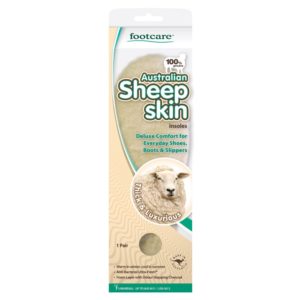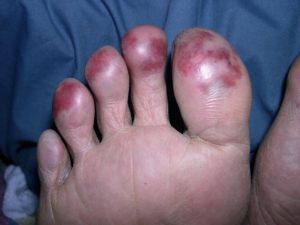Are your toes cold and itchy? Do they often become swollen and change colour? If this sounds like your toes this winter, this blog is for you!
Chilblains are something that can make sufferers dread the cooler months. Chilblains are classified as abnormal vascular reactions to the cold where the small vessels in the body narrow to retain warmth of the vulnerable tissue.
When the vessels widen again as temperature increases, this is when chilblains can take effect as circulation can remain obstructed during this time as the vessels involved don’t open correspondingly during this stage. Although chilblains can affect different areas of the body, our toes are very susceptible to developing chilblains particularly if your circulation to your toes is reduced too.
There are a range of different causes outside if cold weather and poor circulation, we have put a list together below:
- Inadequate footwear, sock or clothes.
- Endocrine imbalance.
- Poor nutrition.
- Infection in the affected area.
- Calcium deficiency.
When it comes to preventing chilblains there are a number of helpful hints to keep in mind!
- Wearing warm clothing or layers of clothing.

- Appropriate footwear – GORE-TEX lined shoes are a fantastic option for winter sports and outdoor activity as this lining functions as a membrane in the shoe upper to withstand water and wind while maintaining breathability.
- Wool socks – Merino wool can work particularly well by both absorbing and repelling water while maintaining a consistent temperature of the feet.
- Sheepskin shoe inserts for added worm and cushioning.
- Avoiding exposure to damp and cold conditions – did you know you can even get waterproof socks now!
- Regular exercise.
- Warm up extremities up slowly – avoid sticking your feet in front of the heater to warm them up, this can make chilblains worse by warming the toes too quickly causing the vessels to open too quickly leading to soreness
- Avoiding trauma to susceptible areas (for example, tight fitting shoes)
- Correcting or treating any underlying deficiencies or systemic problems – having a vascular review of your feet can be a great first step to understanding just how much blood is actually reaching your toes!
When chilblains do break out, which may be one or multiple, they generally resolve within three to five weeks. It is important to protect the chilblain site/s during this time to avoid further tissue breakdown to reduce the likelihood of ulceration.
If you are having trouble managing your chilblains or particularly if your chilblains have broken down, help is at hand! You can contact the clinic to make an appointment to see one of our experienced podiatrists who can assist you further with all things chilblains!

